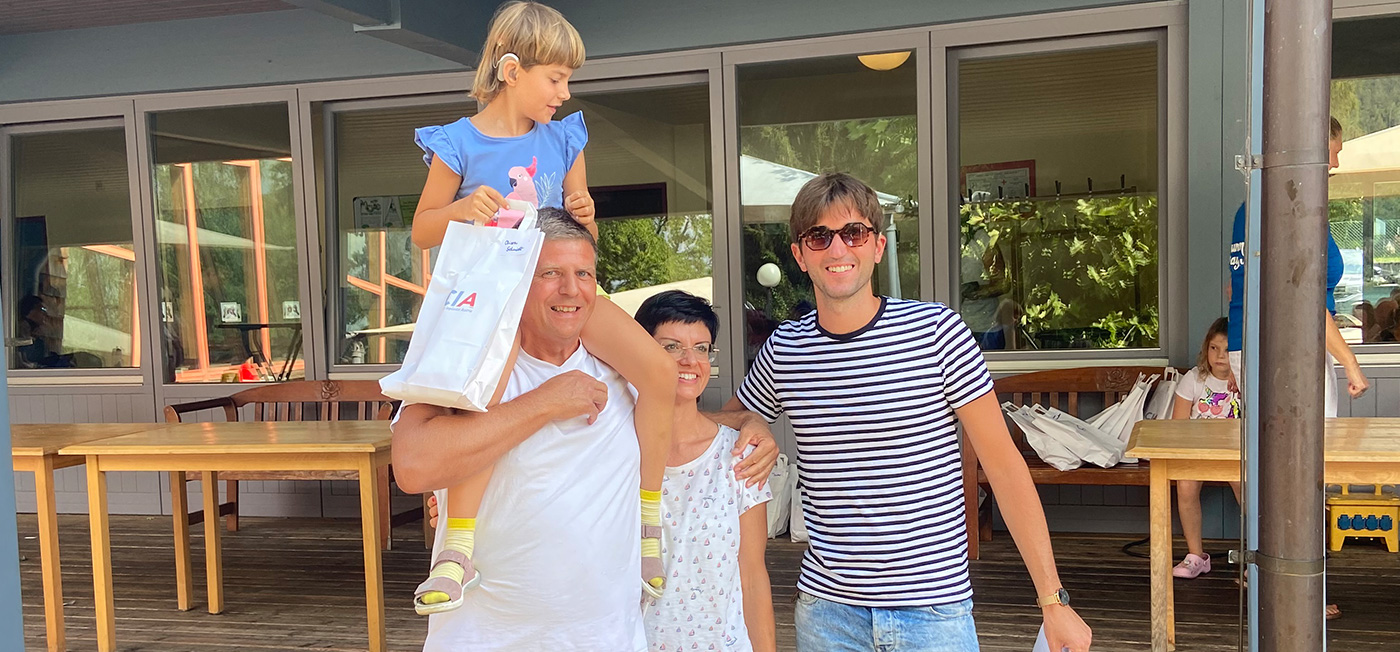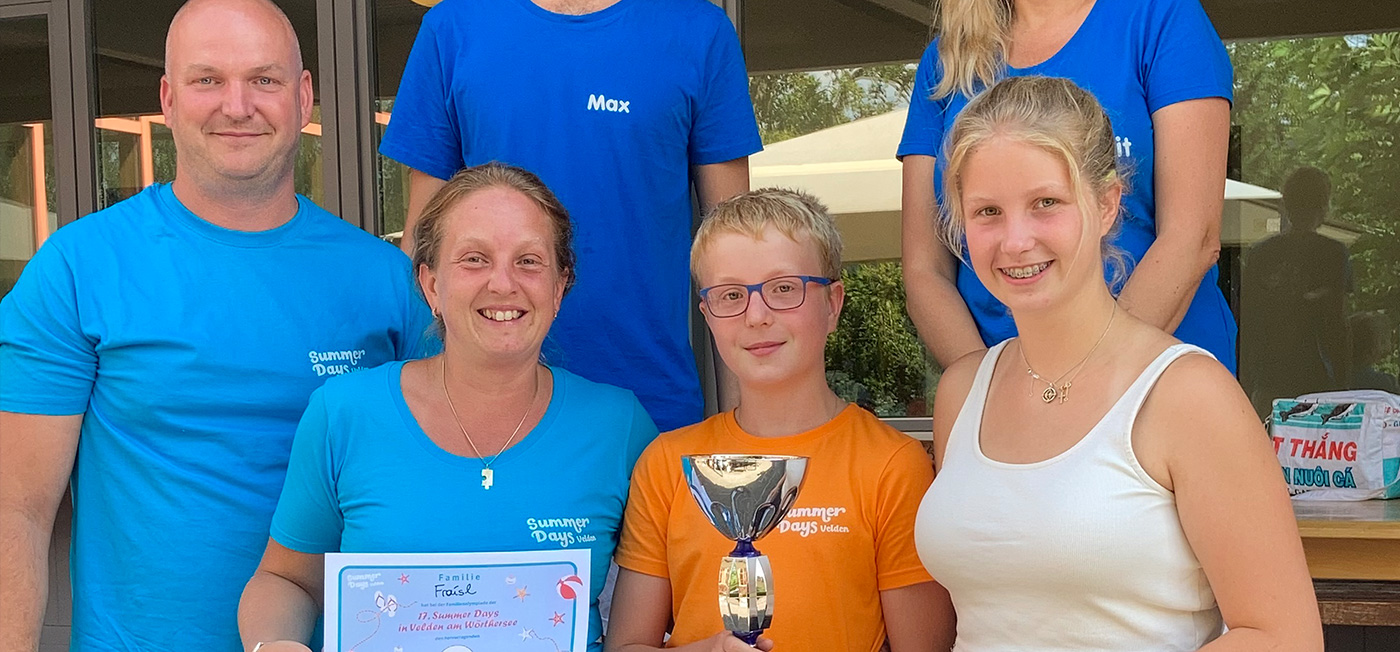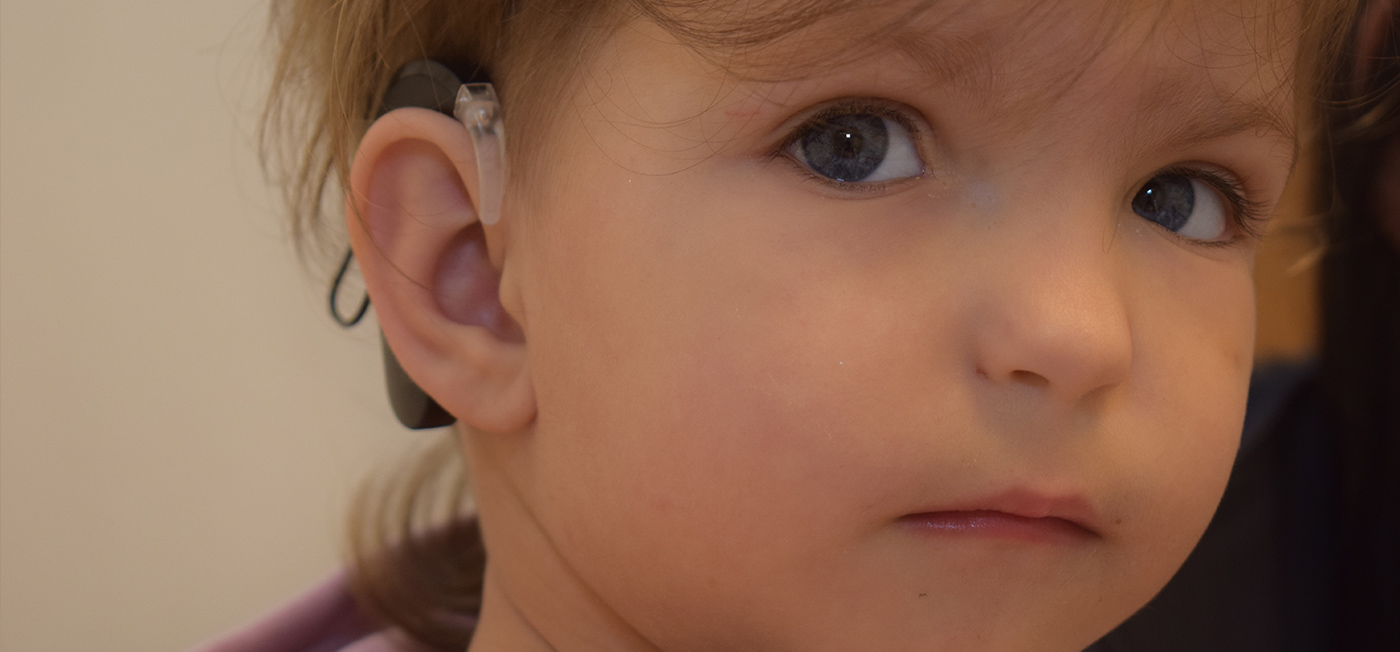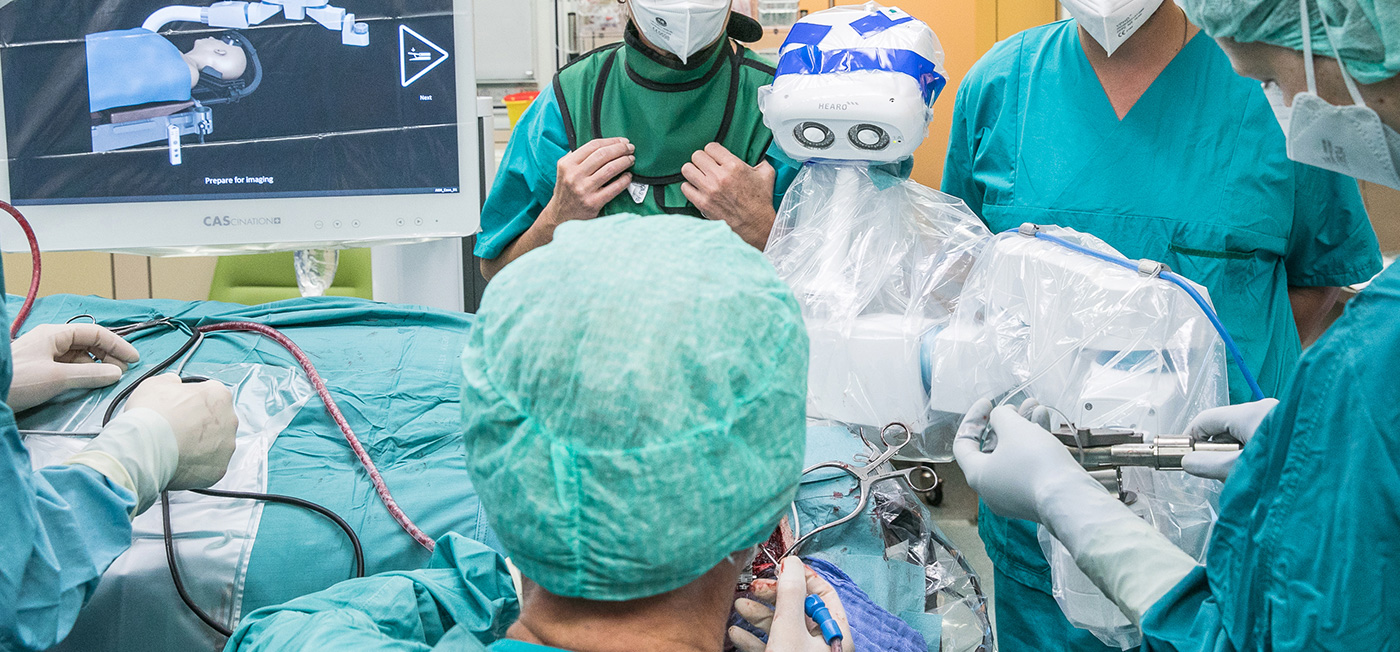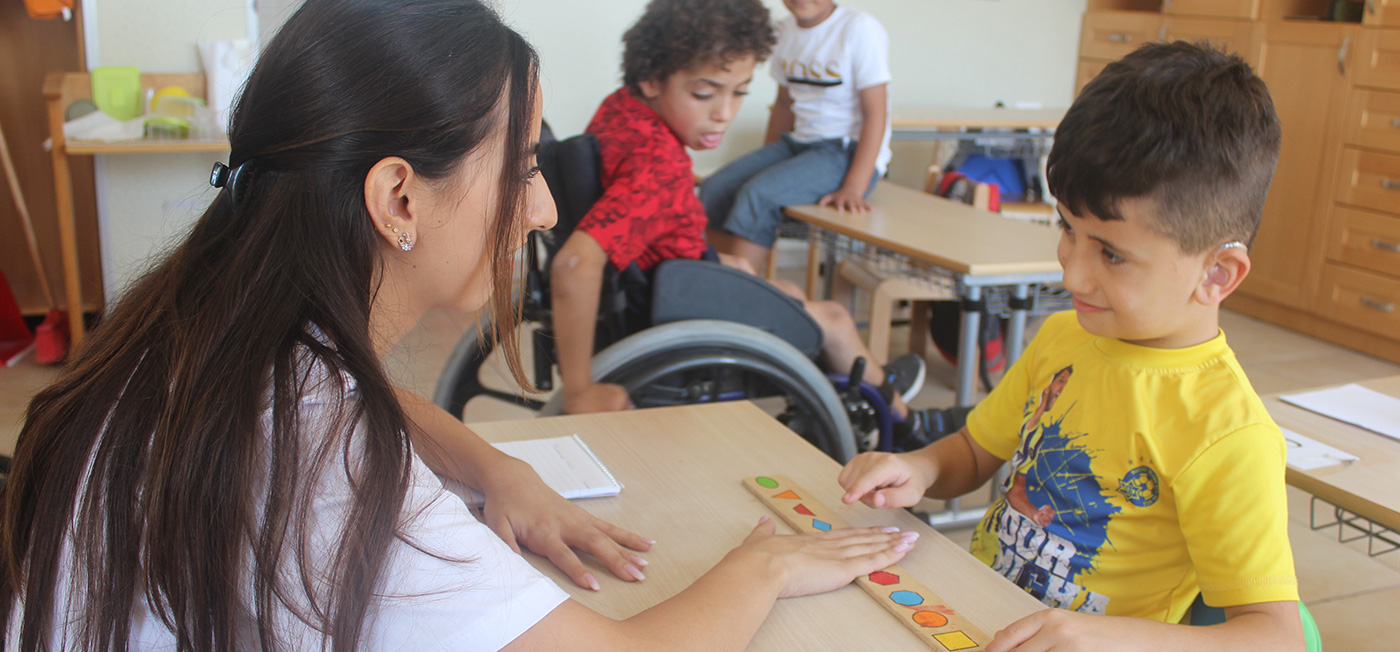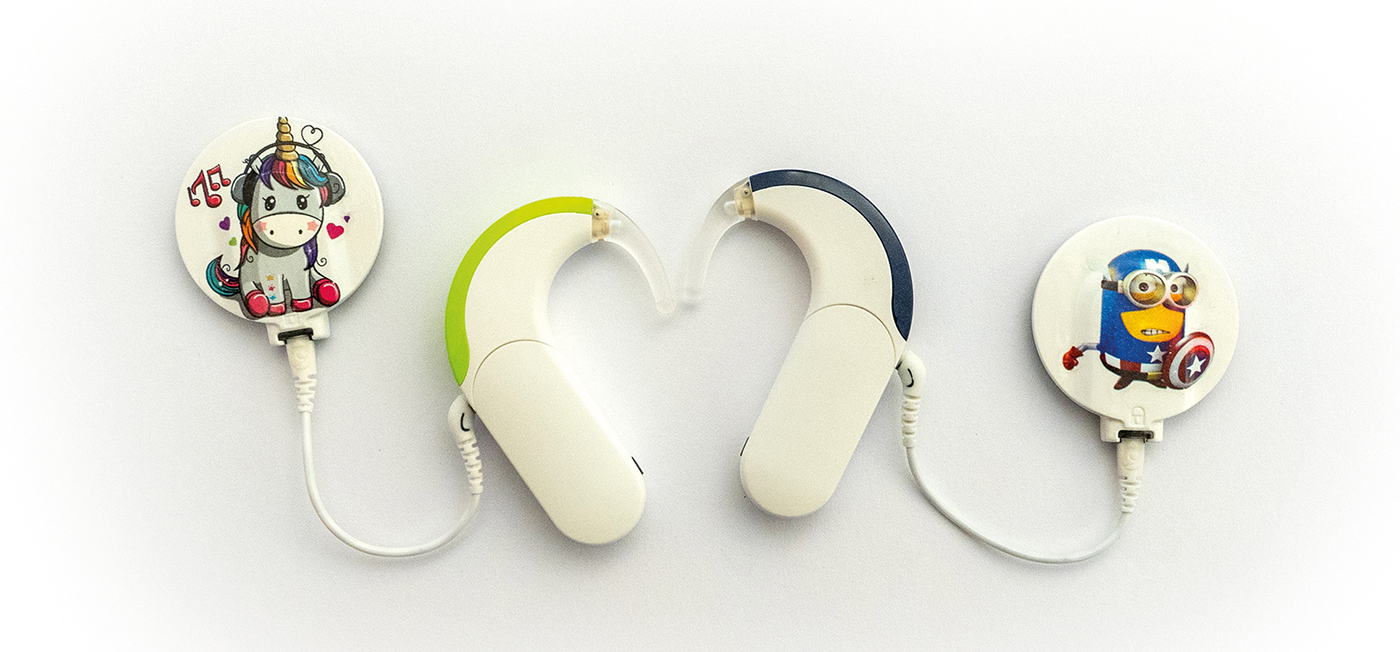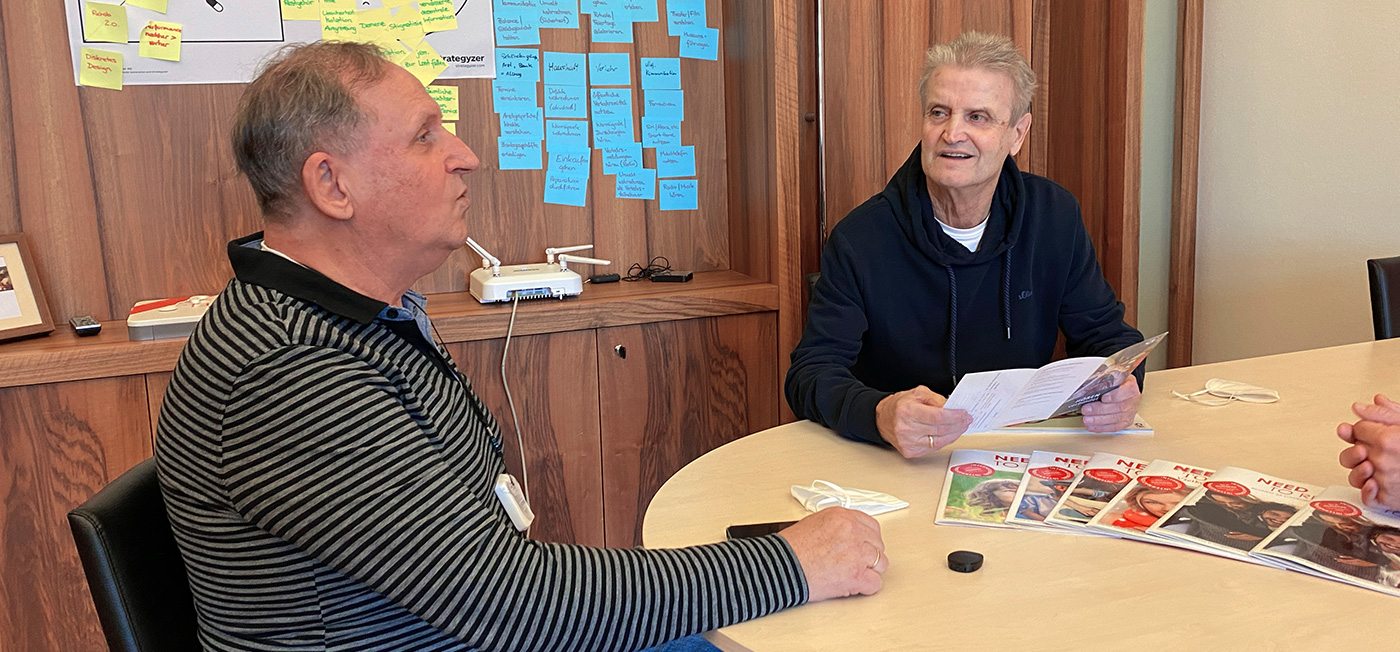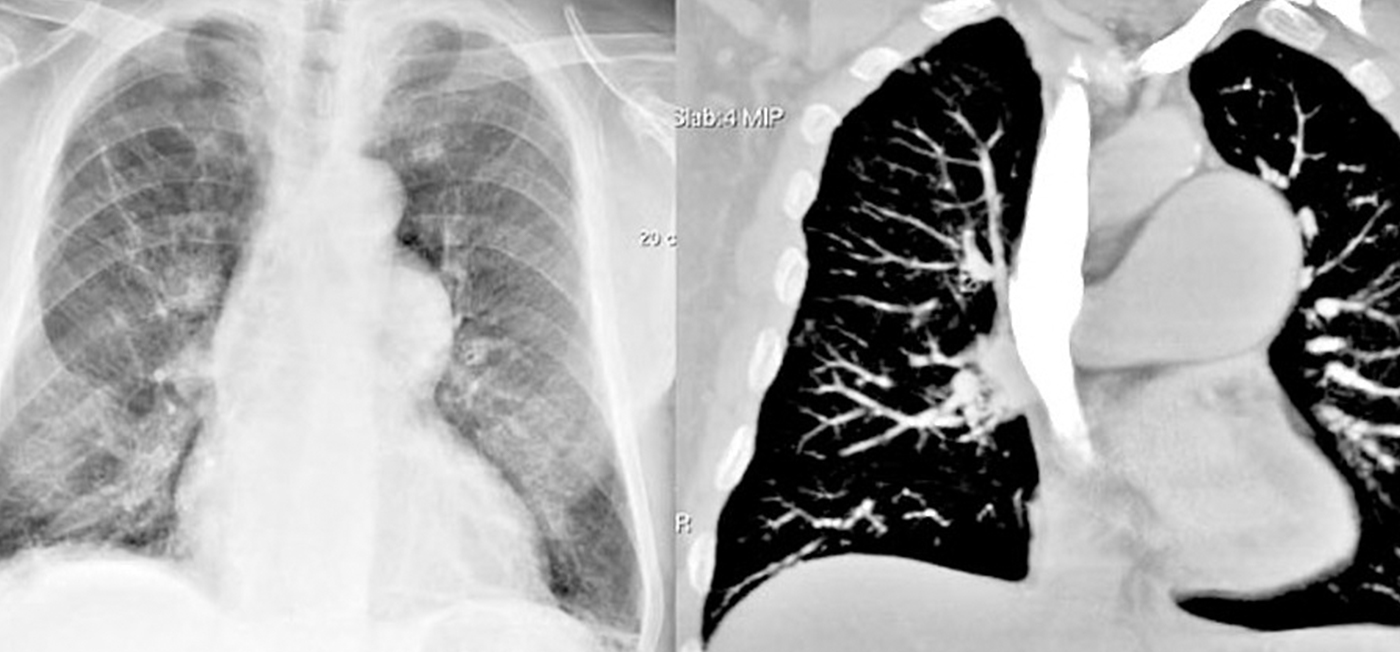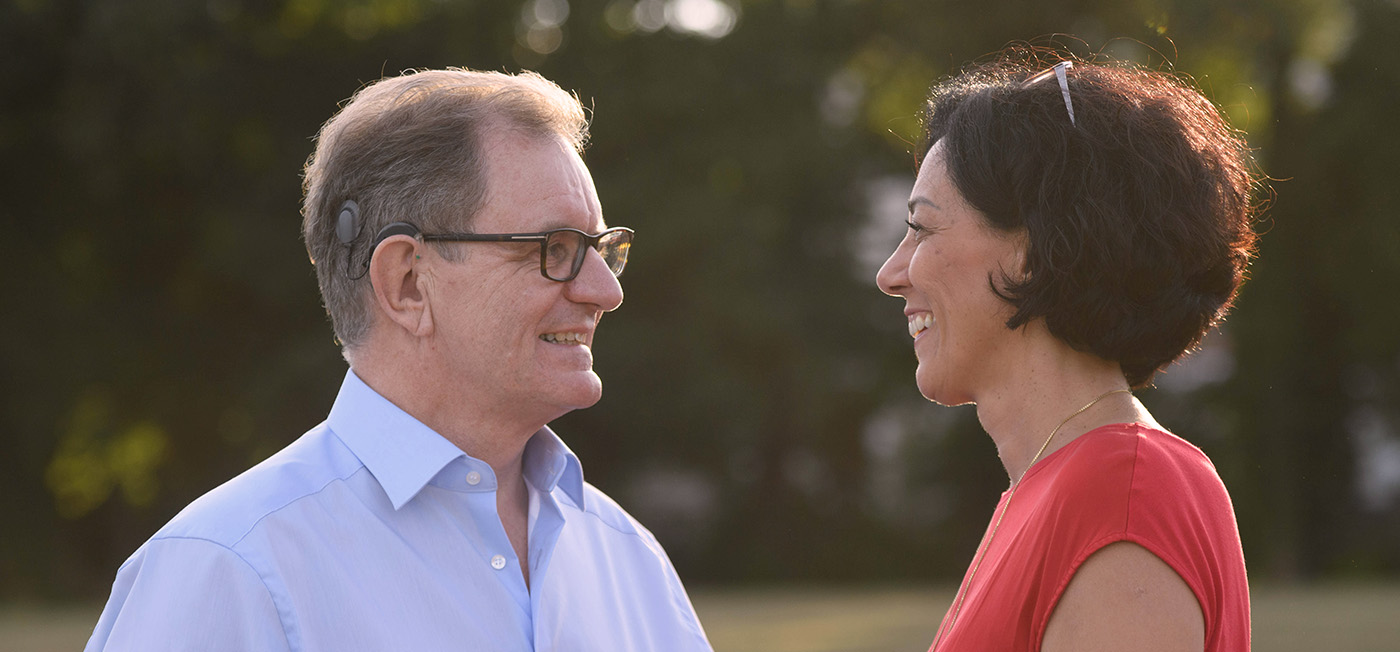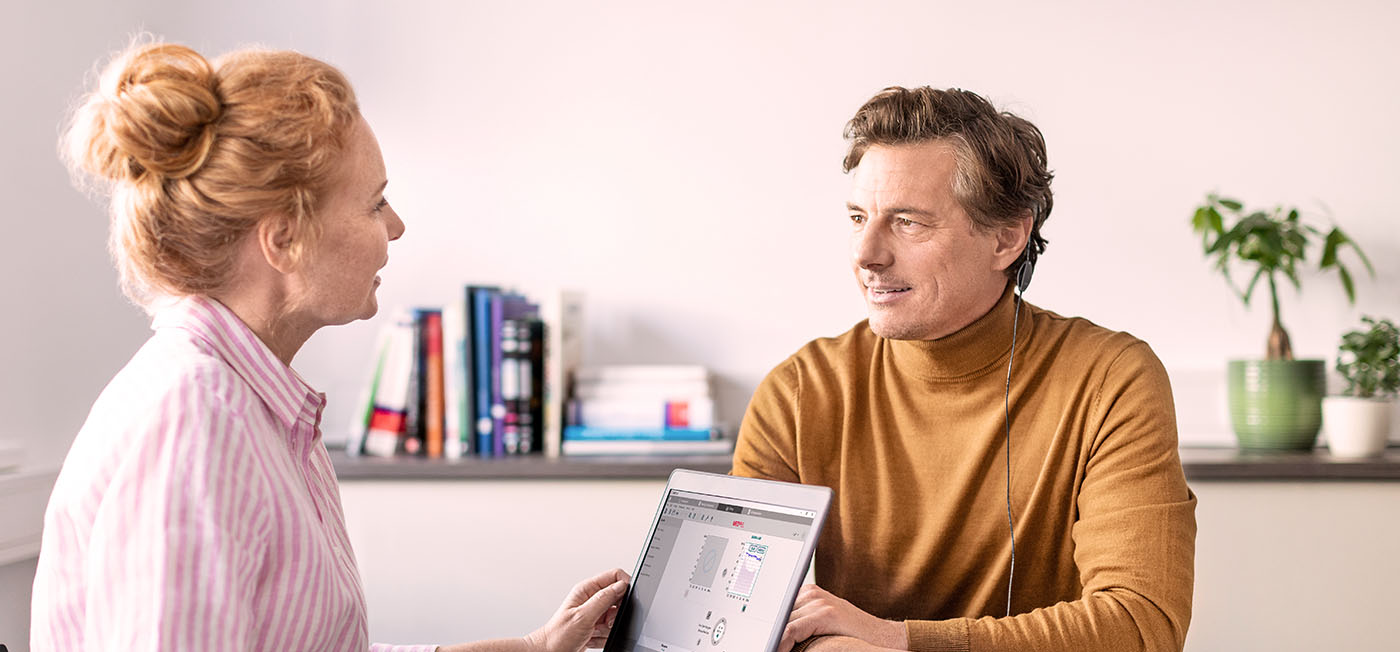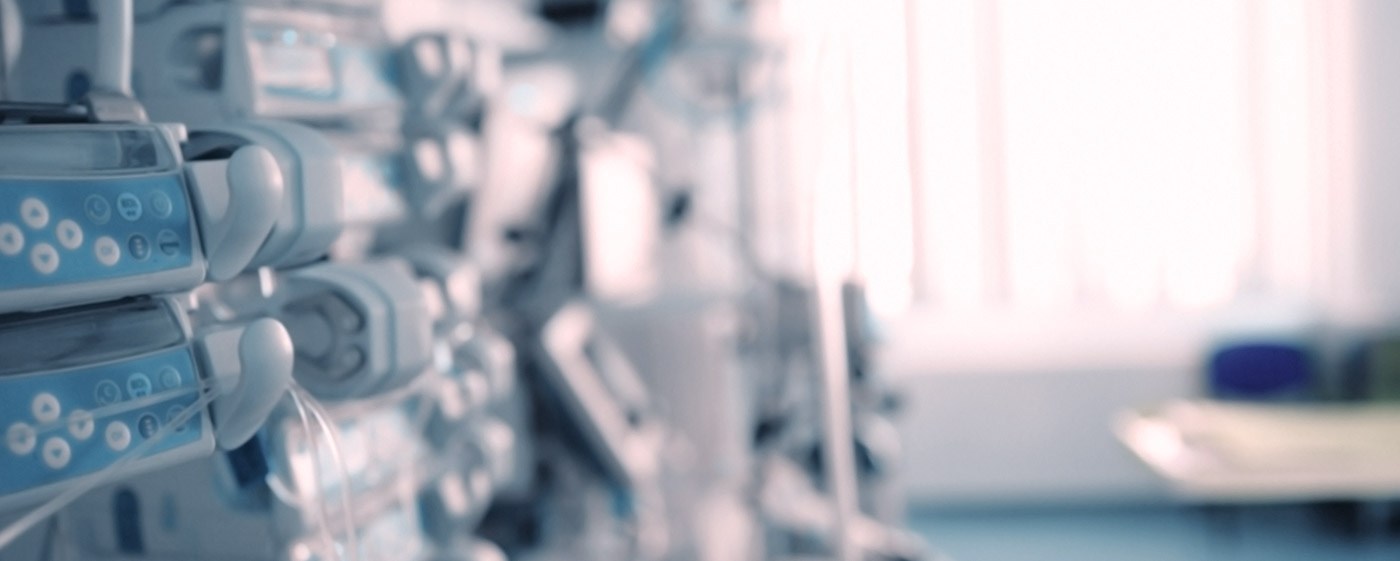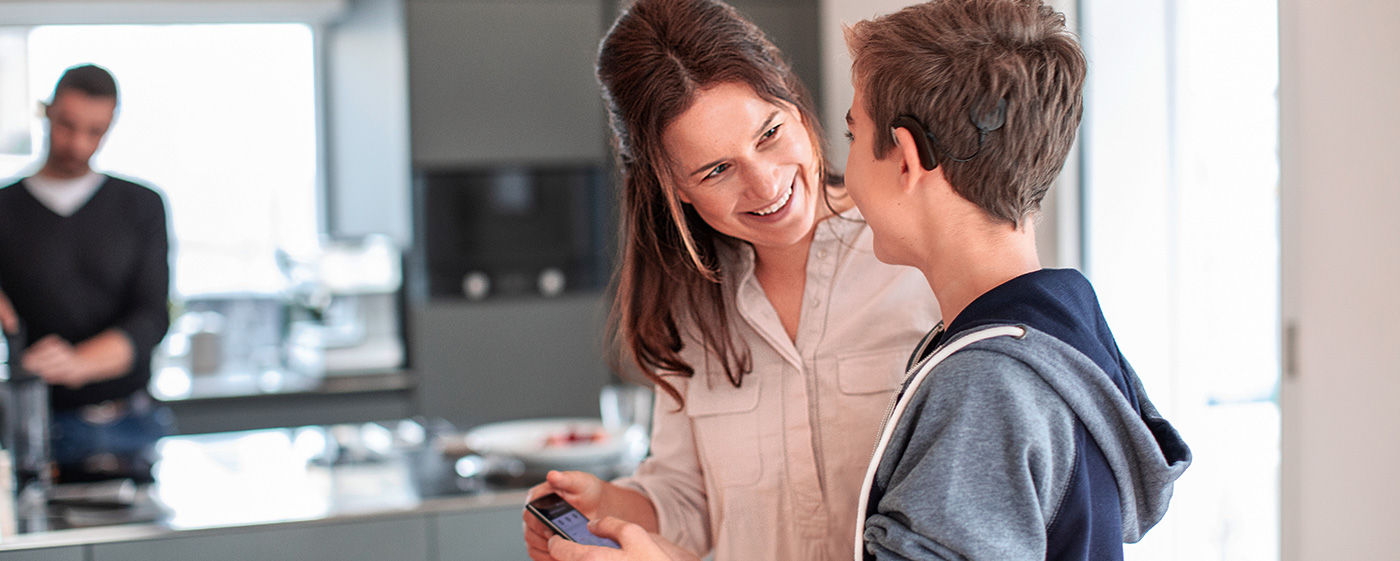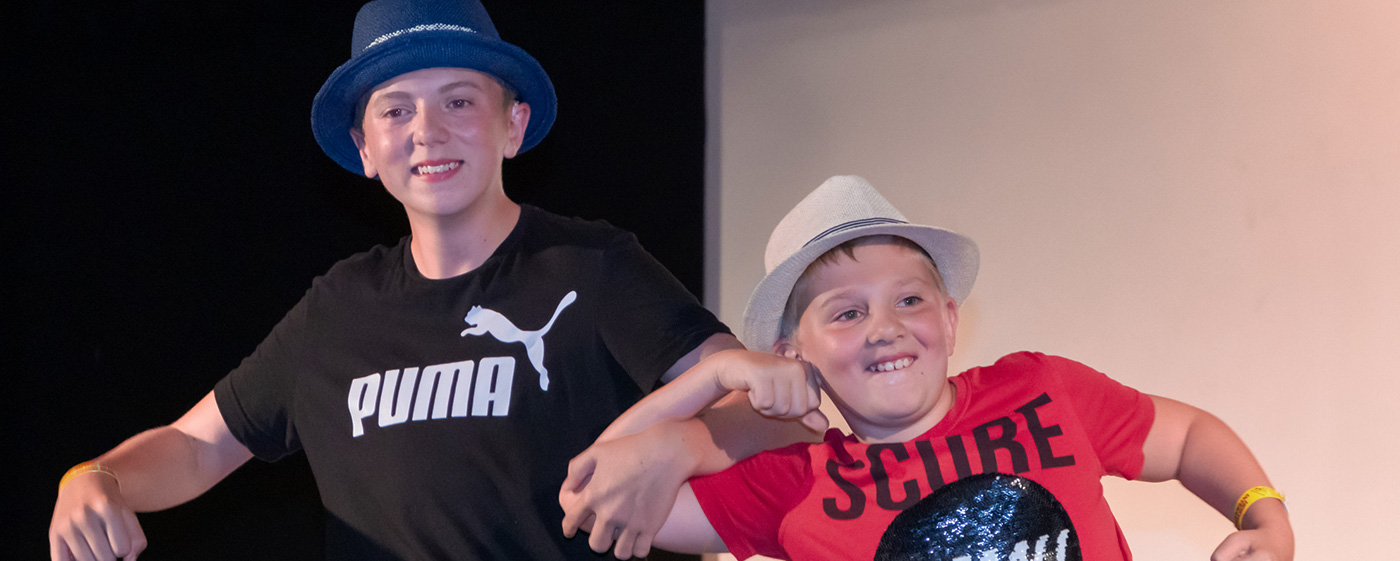HEARING IMPLANTS
Cochlear Implant
Cochlear implants are surgically implanted hearing systems specifically designed for people with severe-to-profound sensorineural hearing loss. Cochlear implants enable people to overcome hearing loss connected to inner ear problems by taking over the role of the hair cells and successfully transmitting the signal to the brain. Cochlear implants consist of two parts: an implant and an externally worn audio processor. Getting a cochlear implant is a chance to overcome hearing loss!
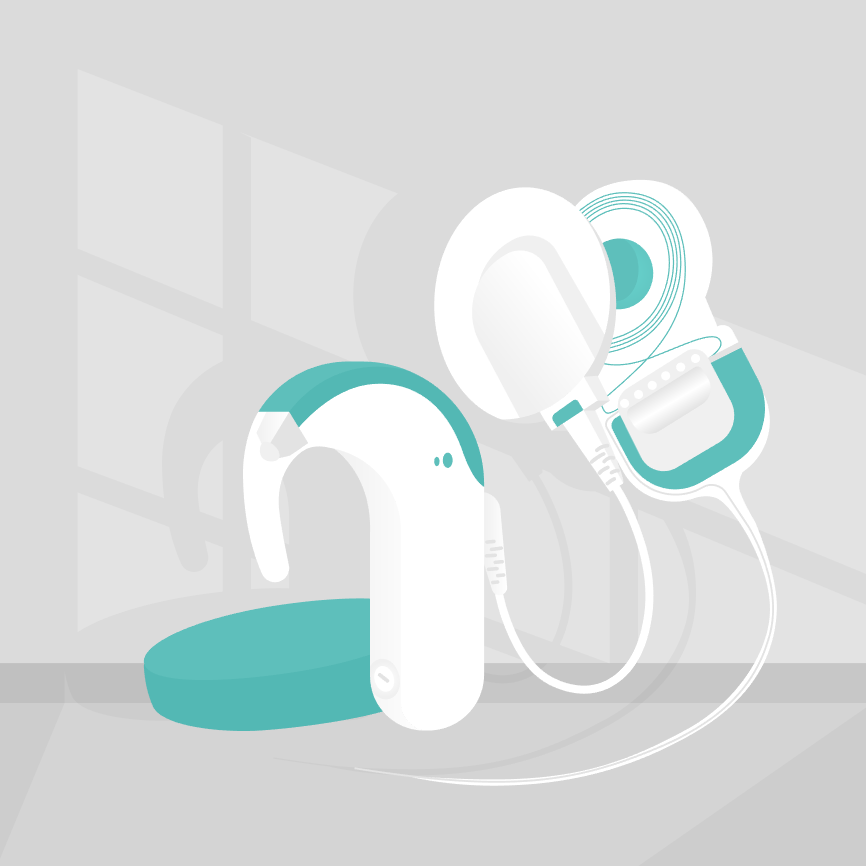
OUR RECOMMENDATIONS
Cochlear Implant System recommendations
Based on the long first-hand experience that the members of the Cochlear Implants Austria (CIA) community share and based on the expert opinion of the association’s president, we recommend MED-EL´s SYNCHRONY cochlear implants. This type of cochlear implant can be combined with two different audio processors: the RONDO 3 single-unit processor or the SONNET 2 behind-the-ear processor which are both presented below.
SYNCHRONY cochlear implants by MED-EL have shown great performance and reliability, which is why our CIA members simply love them. The SYNCHRONY differentiates itself from other systems through the natural sound experience it provides and through its atraumatic electrode arrays which are customized for each user to offer the ideal solution for everyone.
Most natural hearing experience thanks to innovative technology
Adaptability to future developments
MRI safety up to 3.0 Tesla
For cochlear implant candidates, reliability and safety are key criteria when choosing the implant as the implant is the part of the hearing system that will be inside the patient´s body for years. MED-EL implants have been manufactured in Innsbruck, Austria, for 30 years in compliance with the strictest quality control standards.

The RONDO 3 is MED-EL’s single-unit audio processor which offers completely wireless and simple handling. This modern audio processor provides great sound quality, music and telephone streaming options, and wireless charging.
Modern design with over 30 different covers
Compatibility with all MED-EL cochlear implants produced since 1994 and with any model of contralateral hearing aid.
Background noise reduction
Enjoy the comfort and simplicity of all-day hearing with this audio processor! It adapts to the sound environment you are in, thereby providing ideal performance in each situation.
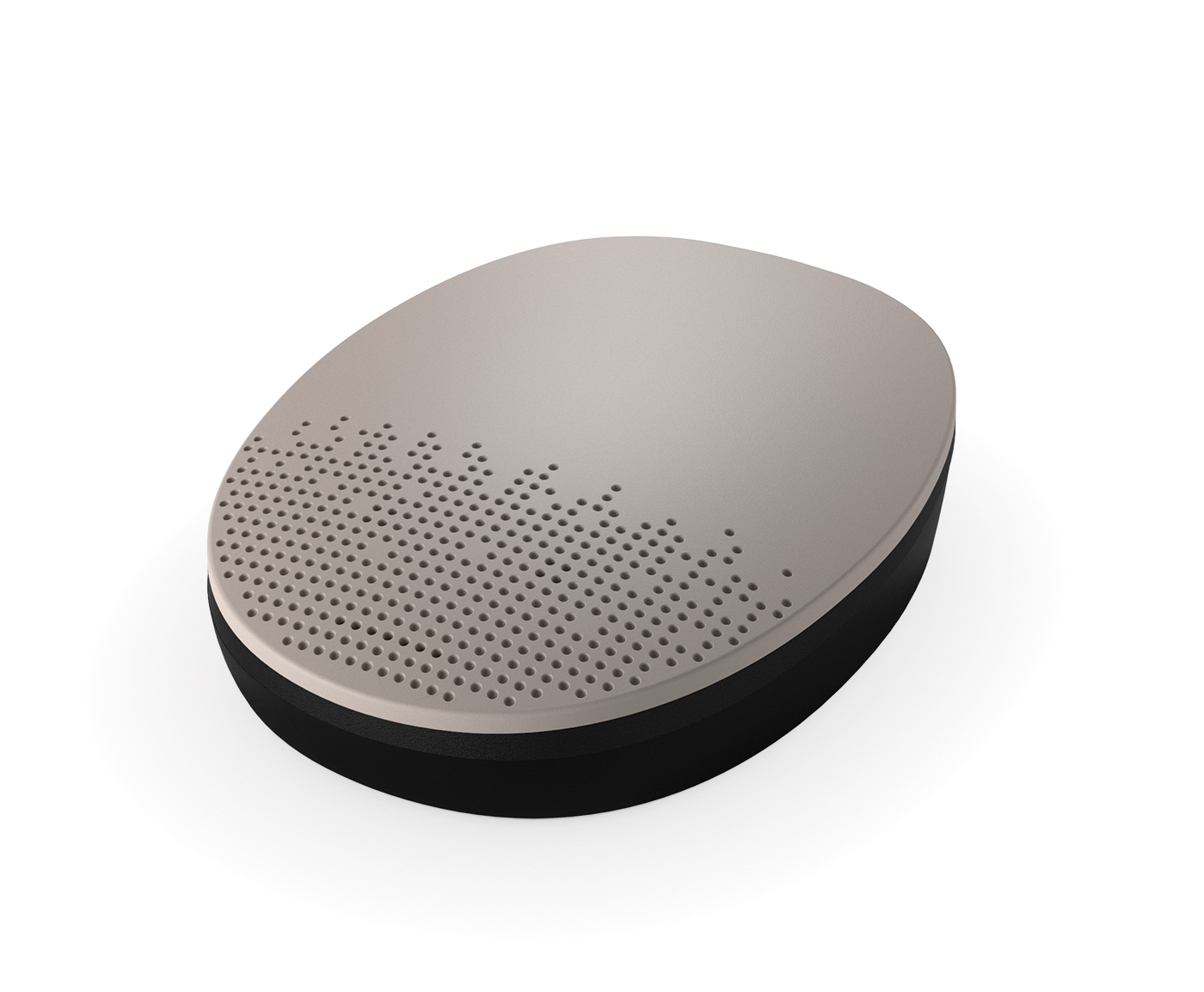
SONNET 2 is MED-EL´s latest behind-the-ear audio processor. It provides great sound quality and adapts to the users´individual preferences, thus being the perfect choice for both children and adults.
Automatic adjustment of settings to match the environment the user is currently in
Reduction of the background noise and any unexpected loud sounds
Use of special technology to provide every sound in its natural shape
Compatibility with all MED-EL cochlear implants produced since 1994 and with any model of contralateral hearing aid
SONNET 2 settings, such as volume and program, can be adjusted directly from your smartphone. This audio processor comes with many different design possibilities to match the individual hair color and taste and can be combined with many different accessories such as water protection for swimming and streaming covers.

A LIFELONG DECISION
Choosing the right Cochlear Implant System
There are several criteria that need to be taken into account when choosing a cochlear implant, such as natural hearing experience, preservation of residual hearing, reliability, and compatibility with different medical examination methods. We made a list of important selection criteria for you below.
Structure Preservation
Preserving the sensitive structures inside the cochlea is key in order to protect the residual hearing.
Natural Hearing
A good implant strives to give its users as natural hearing as possible.
Flexible Electrode
The ideal electrode array means that it provides complete coverage of the cochlea, which then enables perception of a wider range of sounds.
Future Design
Cochlear implants need to be compatible with the upcoming technological developments and fit for future.
Reliability
As getting a cochlear implant means years of great hearing experience, it is important to first check safety and reliability data about an implant.
MRI compatibility
It is indeed important to know whether a cochlear implant is compatible with MRI examinations. There was no MRI compatibility in the past, but with the most modern implants MRIs are no longer a problem.
RECOMMENDED ARTICLES
Read fascinating stories
about cochlear implants!
Dr Christian Schmidt MBA, a father of a child with a CI, describes which factors were decisive for him and his wife when choosing a CI system for their daughter.
Here are the top tips and explanation what to expect while you are recovering from cochlear implant surgery.
When new parents receive the diagnosis "profound hearing loss" in their child, they are usually shocked. But thanks to the latest medical technology and cochlear implants, there is a solution for it!
The results with hearing implants and with conventional hearing aids are constantly improving and the limits of use of these different systems are in a constant change.
How well the school will go for children with cochlear implants depends on several factors. The persistence of the parents is one of them.
While university professor Dr.Florian Eibensteiner was suffering from unilateral deafness which resulted from mumps disease, one of his former students was developing better connection options for CI audio processors.
After a rare disease called neurofibromatoses that affected her hearing, Elena-Daniela Nistor can hear again thanks to a brainstem implant.
The effects of a cold on hearing, with or without a cochlear implant
After health problems, mental training has not only helped Mag. Peter Kmetyko return to the top with his bike, but it has also helped him cope better with hearing problems and learn to live with his BONEBRIDGE implant.
Dr. Ruth Zöhrer studied medicine and has a PhD in biology. Today, she is involved in studies that measure, among other things, how hearing implants affect the quality of life of the CI users.
Patrick Beganovic recalls of his daughter Maja's diagnosis - profound hearing loss. Thanks to cochlear implantation at the Linz University Hospital, the family is now happy to hear Maja's first words.
In September, the first robot-assisted cochlear implantation in the German-speaking area took place in Vienna.
We focus on the town of Bethleem at the turn of each year. However, we do not know much about life with hearing loss in Palestine.
Functionality and attractive design of visible parts of cochlear implants help the acceptance of hearing aids, making it easier for the affected to live with it and for the candidates to make their decision.
For over 30 years, MED-EL is an internationally renowned example of synthesis of research and development in medical technology. A new compendium provides an exciting overview of the most important research areas of the company.
In order to listen to music with better sound quality, Karl-Heinz Fuchs even gave up five percent speech intelligibility when setting the TEMPO+ processor.
Today we are talking from the heart of production of Cochlear Implants: the Implant Development. The experts expain how cochlear implants are developed.
Tahlita from South Africa spent the best day of her life right in the middle of the Corona-crisis. Her mother Bianca Birdsey explains how it happened.
FCEI, the Network for Family-Centred Early Intervention, has been online since February and is also talking about surprising effects of the pandemic on families.
Manufacturers of cochlear implants are announcing many innovations for the next few years. On the other hand, users' requests seem almost modest: simple audio accessories and more focus on music.
There are many reasons why medical professionals want to get the inner pictures of their patients' organs. But, the users of MED-EL hearing implants are well prepared for this!
Find out more on how cochlear implants can relieve persistent ear noise (tinnitus) in single-sided hearing loss.
Read the stories from the bilateral CI users and their personal experience and comparison of cochlear implants.
People with hearing implants often need help when they are in the hospital or in nursing home. Find out more on early and good preparation.
COVID-19 infection can impact the lives and hearing of those affected. Two people describe their experience.
New program for MED-EL cochlear implants called MAESTRO 9.0 improves fidelity and enhances user hearing experience.
Wireless streaming will be possible for all SONNET users – with no other accessories. It is made possible by a special case for the battery compartment: AudioStream.
MED-EL became the first manufacturer of hearing implants in the world to be certified according to the new EU medical products regulations in March 2020.
US nurse Alley Mason works in the intensive care department of a clinic in Texas and is a cochlear implant user.
Direct effects of the Corona virus on ability to hear are the subject of controversial discussion by experts.
With the new application AudioKey, users can control their MED-EL SONNET or SONNET 2 directly from their smartphone.
What is life at a distance actually like for people with hearing impairments?
Many hearing-impaired people use lip-reading for communication - the obligatory mouth and nose masks are a barrier.
Cochlear implants for single-sided deafness are promising for adults and children alike
Even users who received their first cochlear implant years ago may benefit from bilateral implantation.
An insight into why binaural hearing and music complement each other, lead to better speech understanding and why together is better than alone.
Brigitte is so satisfied with her cochlear implant that she now wants one for her other ear. It was not always like this.
Sabine Weinberger-Pramendorfer is extremely satisfied cochlear implant user and wants to encourage candidates to go for it.
For seven years, 13-year-old Valentin from Austria could only hear in one ear. While his hearing loss remained undetected for a long time...
Hobby musician Walter Widler (CI user) talks about his life-long passion for music.
About half the cochlear implant (CI) recipients use a hearing aid in the other ear. To ensure that these two different hearing systems work together well, the CI needs to replicate natural hearing.
Cochlear implants are designed to help develop these essential everyday life abilities in people with unilateral hearing loss.
AudioLink is a wireless all-rounder that makes enjoying music with cochlear implants more comfortable.

